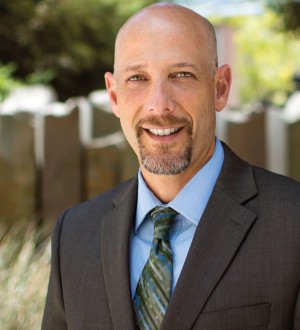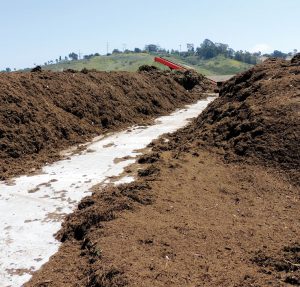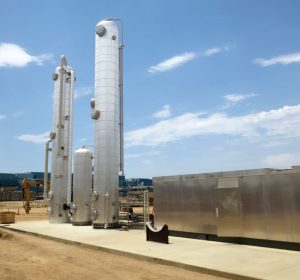In a Q&A session, Scott Smithline, Director of CalRecycle, provides insights on why organics recycling is critical to tackling climate change, depleted soil, drought and renewable energy generation.
BioCycle March/April 2016

Scott Smithline, Director of the California Department of Resources Recycling and Recovery (CalRecycle), is the opening Keynote Speaker at BioCycle’s 30th Anniversary West Coast Conference, April 4-7, 2016 in San Diego. BioCycle editors posed a series of questions related to the state of organics recycling in California to Director Smithline. His answers provide a preview to his anticipated Keynote remarks on Tuesday, April 5 in the Opening Plenary.
BioCycle: California has a long history of environmentally progressive policies, but the state has recently emerged as national leader when it comes to advancing organics recycling. How did you get to this point?
Smithline: Organics recycling is naturally evolving. The Integrated Waste Management Act of 1989 (AB 939) created the foundation for recycling infrastructure in California. California successfully built this infrastructure and recycling programs with the partnership of the state, local governments and industry. However, organic material still makes up more than a third of what Californians throw away each year. We are wasting valuable resources. Organics recycling supports an entire suite of environmental goals and economic benefits including California’s climate change goals. Methane emissions from organic material decomposing in landfills are short-lived climate pollutants with 25 times the global warming potential of carbon dioxide. To meet our climate change goals, California must increase our organics recycling. State, local governments and industry partners recognize the opportunities that organics recycling provides for achieving these goals and realizing these benefits.
BioCycle: This willingness to act has really spanned the political spectrum in California.
Smithline: California acknowledges that climate change is happening. Over the past 10 years, our state’s lawmakers and governors have enacted policies recognizing this reality. In addition to environmental benefits, California policymakers understand that achieving our climate goals results in economic growth and development. By meeting the state’s legislatively-mandated goal to source reduce, compost and recycle 75 percent of solid waste by 2020, we estimate up to 100,000 new jobs will be created.
BioCycle: One major piece of legislation takes effect this year. Can you give us a quick explanation of California’s Mandatory Commercial Organics Recycling law?
Smithline: The Mandatory Commercial Organics Recycling law (AB 1826) is a tool to increase organics recycling in the state. The new law requires businesses such as restaurants and grocery stores that generate a specified amount of organic waste per week to arrange for organics recycling services starting in April 2016. Currently, we anticipate that these recycling services will be comprised primarily of composting and in-vessel digestion (aerobic and anaerobic).
For some California businesses, food donation may be a beneficial way to reduce a portion of what currently is disposed but is still edible and to comply with the law. CalRecycle is working closely with local governments to address the complexities of ensuring that there’s adequate food rescue and organics recycling infrastructure in place so all of this material has somewhere to go.

CalRecycle is collaborating with the state’s agricultural agency to incentivize farmers’ use of compost (Agri Service composting facility, shown).
Smithline: We have to work alongside local governments, organics processing facility operators and other stakeholders to incentivize the expansion or creation of more organics recycling capacity. It’s important for us to simultaneously focus on market development. Part of this is to work collaboratively with other state agencies that have partnerships with industries and businesses that can benefit from organics recycling products. We’re working with the California Department of Food and Agriculture, which is developing an incentive program for California’s agricultural industry to take advantage of the growing supply of compost material. Not only does this compost help make our soils healthier by returning organic matter to the ground, compost and mulch help soils retain more water. Reducing water usage and irrigation-related pumping is critical in California after four years of drought. We’re also working with the California Energy Commission on its transportation fuels grant program, which has provided funding for digestion projects.
There are two keys to building this infrastructure. We need capital investments and this development needs to be done in a way that maximizes the environmental and economic benefits to Californians.
BioCycle: Can you elaborate?
Smithline: By infrastructure, I’m referring to the local government programs that collect the material, the industries and haulers that move it, the facilities that can process and manage it, and the markets and customers who use and benefit from the processed material. Absent additional statutory mandates, each link in this chain requires a financial and economic incentive in order to be successful.
Furthermore, while supporting economic development, this materials management infrastructure must be consistent with the state’s environmental goals and environmental justice principles. We are aware of the potential negative impact facility siting can have on disadvantaged communities. The next generation of organics recycling facilities, regardless of their location, must be the result of a more robust community engagement process and meet the highest environmental standards. These facilities must be good neighbors.
BioCycle: What are your thoughts on financial incentives and other funding opportunities that can assist California’s infrastructure need?
Smithline: One source has been Cap and Trade revenues. CalRecycle was able to offer $25 million in grants and loans in Fiscal Year 2014-15 to build or expand infrastructure projects that result in reduced greenhouse gas emissions. Of the $25 million, $15 million helped fund five organics facilities — two composting and three anaerobic digestion facilities. We’ve been successful at sparking interest in new projects, getting the money out, and getting the agreements in place. We’re excited to see how all of these projects progress in the coming year. The Governor’s proposed 2016-17 budget includes $100 million for new and expanded infrastructure, as well as organics management programs such as food recovery. While Cap and Trade funding won’t build all of the infrastructure, it is a critical component.
BioCycle: Landfill tip fees are still relatively cheap, compared to processing and remanufacturing of recyclable materials. What can you do to level the playing field in California and make recycling a more financially viable option?
Smithline: Right now in California, landfilling is often the cheapest option — and that does little to drive materials to higher and better end uses. While there are many local variations, tipping fees in some areas in California are so low that they essentially incentivize disposal. In addition, the benefits, including the economic benefits, of compost and mulch — such as water retention and improved soil health — are not well quantified in terms of market value. These measureable benefits are essentially treated as externalities that don’t get built into the pricing. In turn, this artificially limits demand.
BioCycle: What are some key challenges the 75 percent goal creates?
Smithline: As we move toward our 75 percent statewide recycling goal, we expect to see a decline in landfill disposal, which means a drastic reduction in tipping fee revenue for both local governments and the state. However, as organics recycling infrastructure expands, oversight responsibilities will increase. This will limit CalRecycle’s ability to administer the programs that have made California a worldwide leader in environmental stewardship.
The funding reduction will also make it harder for local jurisdictions to meet their statutory obligations. While increasing fees on landfill disposal would help fill a short-term funding gap, California can’t solely rely on landfill fees as our primary revenue source and must decouple funding from disposal. We’ve begun looking at sustainable funding-source alternatives that have worked in other states. These options could include increased facility fees, producer fees, or charges on waste generators.

CalRecycle is collaborating with the the state’s Energy Commission on its fuels program provides grants to digesters (CR&R anaerobic digester shown).
Smithline: Food recovery for human consumption should be the top priority and yes, we can effectively do both.
What we’ve found, and helped fund through our organics grant program, is that projects can simultaneously target and gather edible food for at-risk populations and focus on turning the remaining inedible food into compost or energy. CalRecycle included food recovery in our 2014-15 organics grant eligibility criteria, to encourage more businesses to consider this option. That resulted in a $2.9 million grant award to a joint effort by Fresno Metro Ministry and Colony Energy Partners to expand a food donation network in Fresno County for recovered edible food, with all remaining food waste going to Colony’s new anaerobic digestion facility to be built in nearby Tulare County.
CalRecycle recognizes the food waste hierarchy, which includes waste prevention and food recovery as top priorities. As I alluded to earlier, the Governor’s proposed 2016-17 budget includes $10 million that would be dedicated to food waste prevention and food recovery efforts. Ultimately, we’d like to see a link between food recovery organizations, local governments, organic recycling facilities, and haulers because they all play a key role in reducing organic waste and achieving the highest and best end-use for over five million tons of food that Californians are currently disposing annually.










